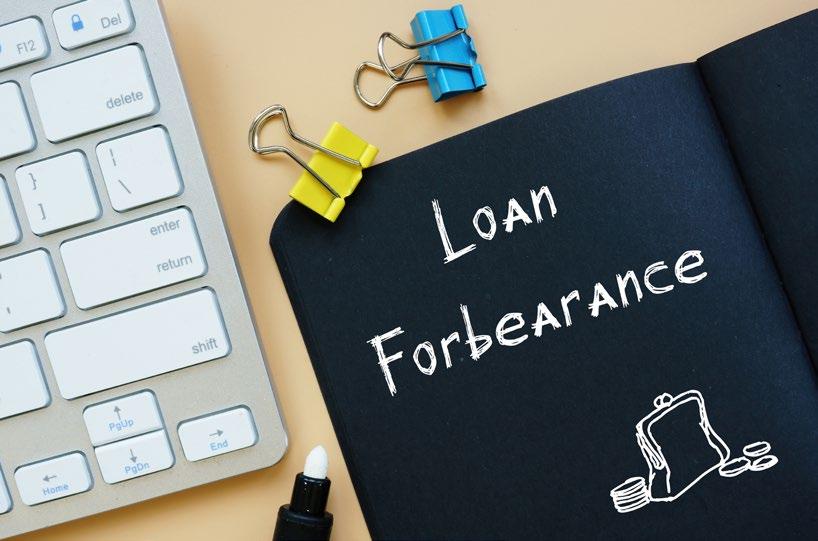
3 minute read
Forbearance - Your Mortgage on Pause or SloMo
MORTGAGE
Forbearance – Your Mortgage on Pause or in SloMo
Advertisement
Understand what it does, what it doesn’t do and how it can impact now and the future.
Written By: Eric Hoolihan
You may have heard from your lender, or read online, about offers to place your mortgage into forbearance. Forbearance is when your mortgage servicer (the company that sends your mortgage statement and manages your loan) or lender allows you to pause or reduce your payments for a limited period of time. This can be an attractive option when you are facing income or job loss, but there are some important caveats to be aware of when you embark on this path.
Keep in mind, a forbearance is not a forgiveness plan. The missed or reduced payments must be made up through a method arranged with your servicer or lender. Options for repayment include: Reinstatement or full repayment, where you pay back the missed payments; Repayment plans which allow you to catch up gradually while paying your regular monthly payment; Modification of the loan applicable when you have a sustained reduction in income resulting from the COVID crisis wherein the servicer or lender will look into changing the terms of your loan that might better suit your new circumstances. Generally, your loan servicer will reach out to you about 30 days before the scheduled end of your forbearance to determine which assistance program is best for you at that time.
When you have a mortgage in forbearance, the missed payments are not reflected as late on your credit report but the forbearance itself is usually reported to the credit bureaus. This could have an impact if you are looking to buy a new home or refinance your existing mortgage. Fannie Mae and Freddie Mac, the governmentsponsored enterprises that guarantee many mortgages in the secondary market, hold that borrowers are eligible to refinance or buy a new home if they are current on their mortgage (i.e. in forbearance but continued to make their mortgage payments or reinstated their mortgage). For borrowers currently in forbearance and not making their scheduled payments, Fannie Mae and Freddie Mac guidelines state that they are eligible to refinance or buy a new home three months after their forbearance ends and they have made three consecutive payments under their repayment plan, or payment deferral option or loan modification.
Some lenders have applied even stricter requirements which require a longer history of on-time payments once the loan is made current. These overlays, as they are known, are qualification requirements imposed by the lender that exceed the standard qualification requirements for a loan program. For example, here is one lender’s forbearance overlay:
“For loans that were in forbearance, the loan must no longer be in forbearance. Additionally, one of the following must be true: A – the borrower has made ALL mortgage payments within the month they were originally due OR B – if the borrower has NOT made ALL mortgage payments during forbearance, then 6 consecutive, on-time payments must be documented since the loan was removed from forbearance. In both cases, the mortgage must be current.”
This could have a considerable impact for borrowers who took advantage of a forbearance program and are now looking to purchase a home or refinance their loan.
A mortgage forbearance can be a valuable option for borrowers who need to take advantage of the program but there are many implications with this process that can have lasting effects on your future plans. Borrowers should conduct due diligence, understanding all implications, before opting into such a program.
About the Author
Eric Hoolihan has been an airline pilot for over 14 years having flown the D-328Jet, EMB-145 & A320. He is licensed as a loan officer in Minnesota and Texas. Read More...



